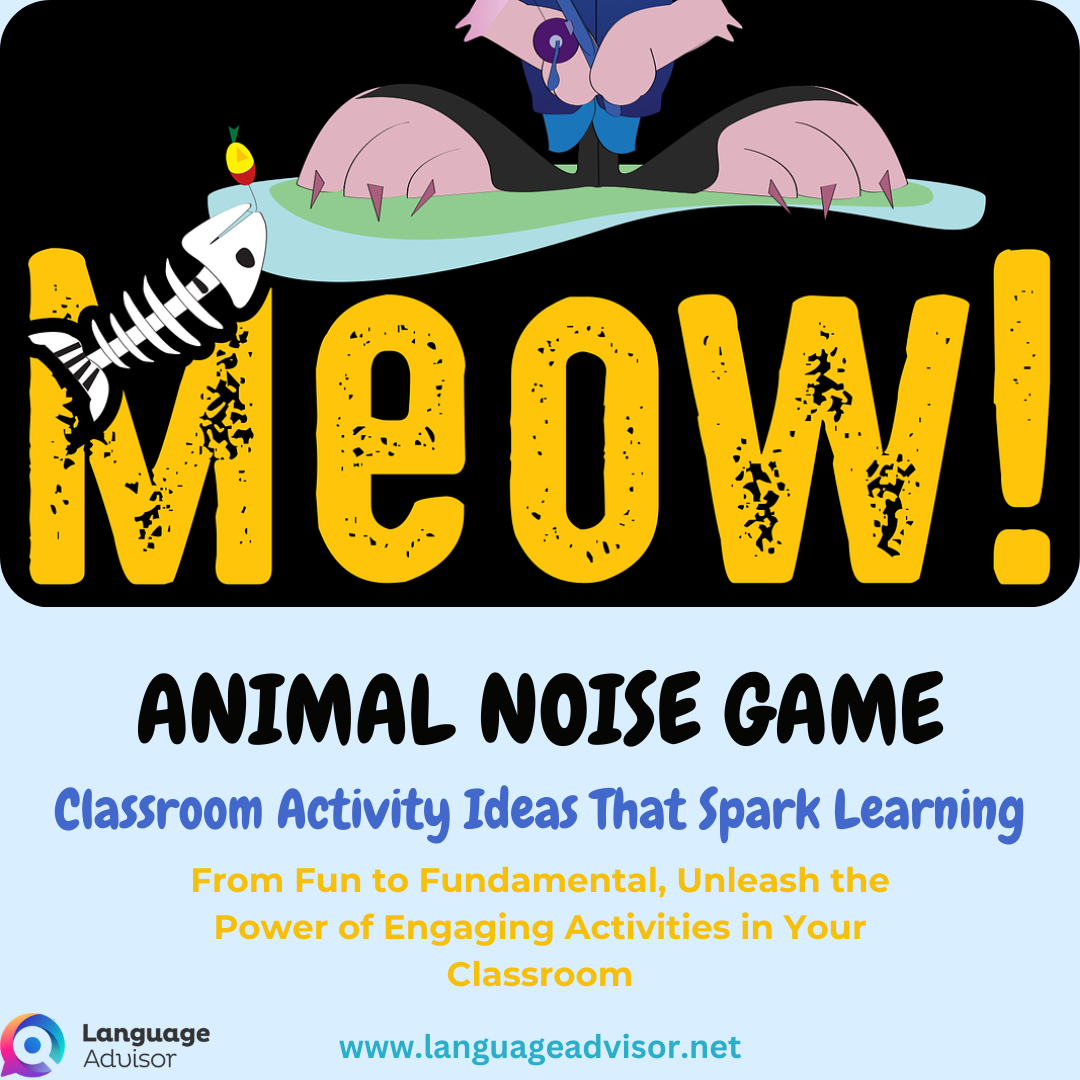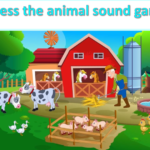ANIMAL NOISE GAME: Classroom Activity Ideas That Spark Learning. From Fun to Fundamental, Unleash the Power of Engaging Activities in Your Classroom
ANIMAL NOISE GAME

ANIMAL NOISE GAME: Classroom Activity Ideas That Spark Learning
Every teacher knows that a dynamic and engaging classroom is the cornerstone of effective education. To keep the learning environment vibrant and inspiring, it’s essential to incorporate innovative classroom activities that capture students’ imaginations and enhance their educational experience. In this blog post, we’re excited to present a treasure trove of creative and versatile classroom activity ideas that cater to a wide range of subjects, grade levels, and teaching styles. Whether you’re a seasoned educator looking to revamp your teaching strategies or a new teacher eager to make a memorable impact, these activity ideas will breathe new life into your classroom. So, let’s embark on this educational journey and explore a world of exciting possibilities that will make learning not just informative but unforgettable.

ANIMAL NOISE GAME
Target Group: Kindergarten
Difficulty Level: Fundamentals
Activity Objective: To teach animal noises and names
Since many of the kindergarten students love animals and already know their names, the teacher decides to create a lesson that combines the children’s pre-existing interest with a new element of learning: animal noises. To achieve this, a picture book and a game are employed.
The teacher commences the activity by reviewing the different animals, their names, and the sounds they make in English using an engaging picture book. The teacher then utilizes large animal flashcards to provide a brief recap of the animals they have just learned. In instances where the students struggle with certain animal sounds, for instance, the challenging “squeak squeak” of a mouse, the teacher displays the flashcard on the whiteboard and includes the pronunciation next to it in written form. While the preference is for students to hear the natural pronunciation of words, the visual reminder proves helpful, particularly in retaining difficult sounds. Once satisfied with the students’ pronunciation, the teacher initiates the actual game.
The children display immense excitement and enthusiasm for making animal sounds, and the teacher informs them that they will assume the roles of animals in this game. This introduction sets the stage for the activity. The teacher then divides the students into groups and allocates specific animals to each group. To aid in better recollection of their assigned animals, the teacher distributes small animal cards featuring images of each respective animal.
The distribution of these cards helps the students remember their animals and proves particularly useful for those who find the game challenging. The teacher instructs each group to practice making the noises associated with their designated animals until they sound akin to the actual creatures. After approximately 5 minutes of practice, the teacher directs the children to stand, explains the rules of the game, has them close their eyes, and mixes them up. When the teacher utters “go,” the children open their eyes and embark on a quest to locate their group members using the sounds they have practiced and, if necessary, the animal cards they are holding.
Through this game, the students not only reinforce their knowledge of animal names but also familiarize themselves with the corresponding sounds. The first group or groups to successfully locate all their group mates based on sounds and take their seats emerge as the winner(s)!
Materials and Preparation
This activity requires large animal flashcards, a white board, and small animal cards (approximately 7 different animals, and enough cards for the entire class). The flashcards and animal cards can be printed using clipart pictures or cute pictures found online and photocopied in the office.
Suggestions and Advice
The children easily get excited when the teacher exudes enthusiasm. During the picture book and flashcard review, the teacher encourages the children to repeat the animal sounds, altering their voices to make them deeper, like a cow, or squeakier, like a real mouse. The resulting sounds elicit giggles from the children. The classroom is filled with silliness and playful gestures, which are wholeheartedly embraced.
The children are equally responsive when the teacher sheds any inhibitions and playfully informs them that during the game, they will transform into animals. Encouraging the Japanese Teachers of English (JTEs) to participate and be silly is another effective technique that engages the children, even the shyest among them.
Finally, if there’s ample time, the teacher suggests playing a few rounds and switching up the animals. Once the children are familiar with the rules, the activity flows more smoothly, ensuring that everyone has an opportunity to participate and possibly emerge as the winner.

Classroom Activity Ideas That Spark Learning
In the ever-evolving landscape of education, the role of teachers is not just to impart knowledge but also to inspire, engage, and empower their students. The classroom activities we’ve explored in this blog post are more than just tools for teaching; they are catalysts for transformation. They have the potential to ignite a passion for learning, foster critical thinking, and build meaningful connections among students.
As educators, we are tasked with shaping the future, and these activities are powerful tools in our arsenal. By embracing innovation and adopting creative approaches to teaching, we create environments where students not only learn but also thrive.
So, whether you’re a seasoned teacher looking to rejuvenate your classroom or a new educator embarking on your teaching journey, remember that every activity you introduce is a chance to make a lasting impact. Keep experimenting, keep adapting, and keep kindling the flames of curiosity and knowledge within your students.
The possibilities are endless, and the future is brighter because of the dedication of teachers like you. Thank you for your commitment to the world of education and for seeking out ways to spark learning in your classroom.
Together, we can continue to inspire the leaders, thinkers, and innovators of tomorrow.

Also check out these articles on teaching, teaching methods and teaching tools












